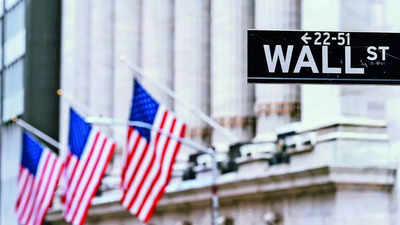Trump Taiff US Stock Market: US stocks tumble on Trump tariff worries, S&P 500 falls to lowest since September

Stock markets fell Monday amid apprehension over Donald Trump’s Liberation Day announcements. Since coming to power, Trump announced several targeted taxes – also as a warning- which will come into effect on Wednesday but there is little clarity about what the tariffs are and how they will impact the countries. According to reports, even Vice President JD Vance, chief of staff Susie Wiles are not aware of the details of the plan that commerce secretary Howard Lutnick is putting in place. Insiders claimed that the details have been intentionally kept safeguarded so the markets do not get spooked though the stock markets on Monday morning took a hit.
The Dow Jones Industrial Average traded 311 points lower, or 0.7%. The S&P 500 dipped 1.1%, and the Nasdaq Composite shed 1.6%. Investors were in a risk-off mood again early Monday, selling the tech bull market winners like Nvidia, Tesla, and Meta.
Uncertainty over tariffs
Trump initially said the reciprocal tariffs that he’s planning to impose on countries that tax US products would be very lenient and some countries may get a breather. But on Sunday, he took a U-turn and said all countries would get the reciprocal tariffs. “You’d start with all countries,” Trump told reporters aboard Air Force One. “Essentially all of the countries that we’re talking about.”
On how global markets fell after Donald Trump’s latest comment on tariff, Axios reported that stock markets fell in Asia on Monday morning following Trump’s comments, with Japan’s Nikkei 225 benchmark falling 4 per cent, South Korea’s Kospi around 2.5 per cent lower and Hong Kong’s Hang Seng Index down 1.7 per cent. In Australia, the ASX closed 1.7 per cent lower.
“Recession risks have become elevated — to a 40% probability — on concerns that aggressive US policies hit business and household sentiment,” said Bruce Kasman, chief economist at JPMorgan, per Reuters. “With the latest tariff increases set to push US core inflation above 4% next quarter, a household sector with a healthy balance will need to show a willingness to lower its saving rate to cushion this blow.”





